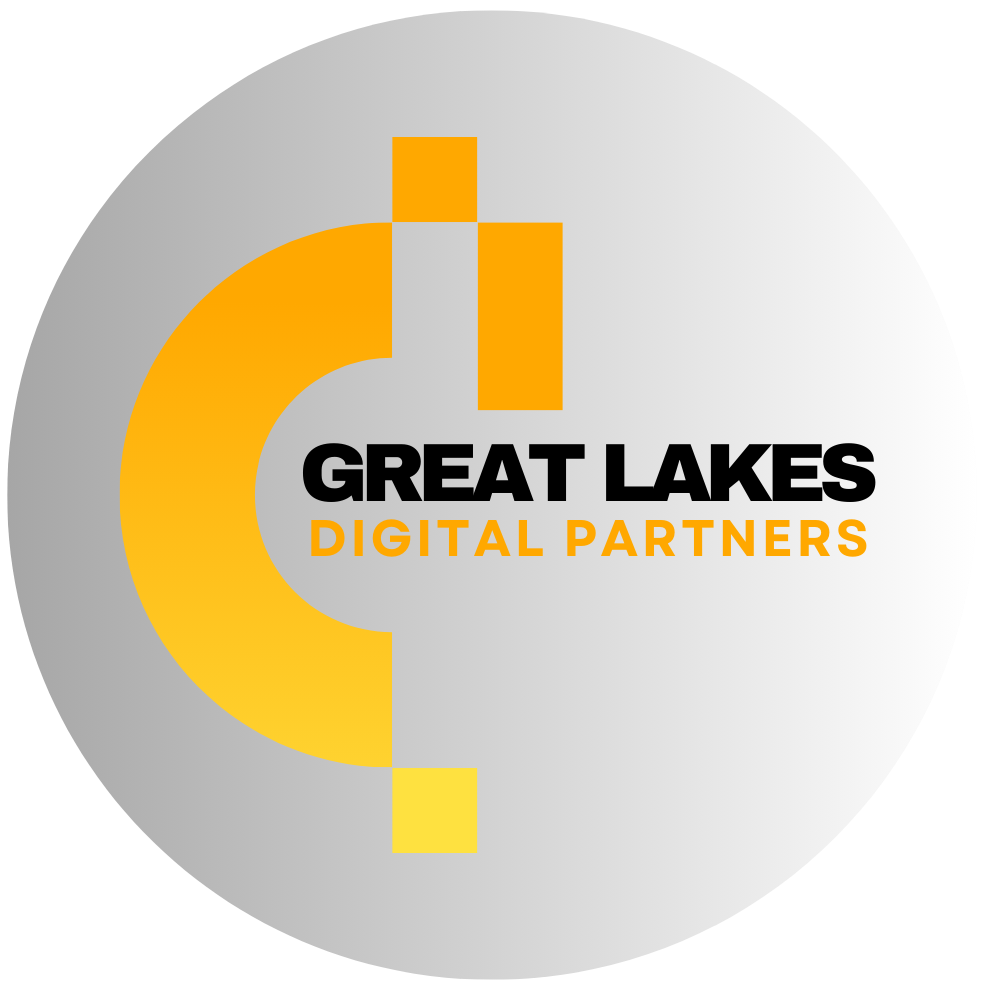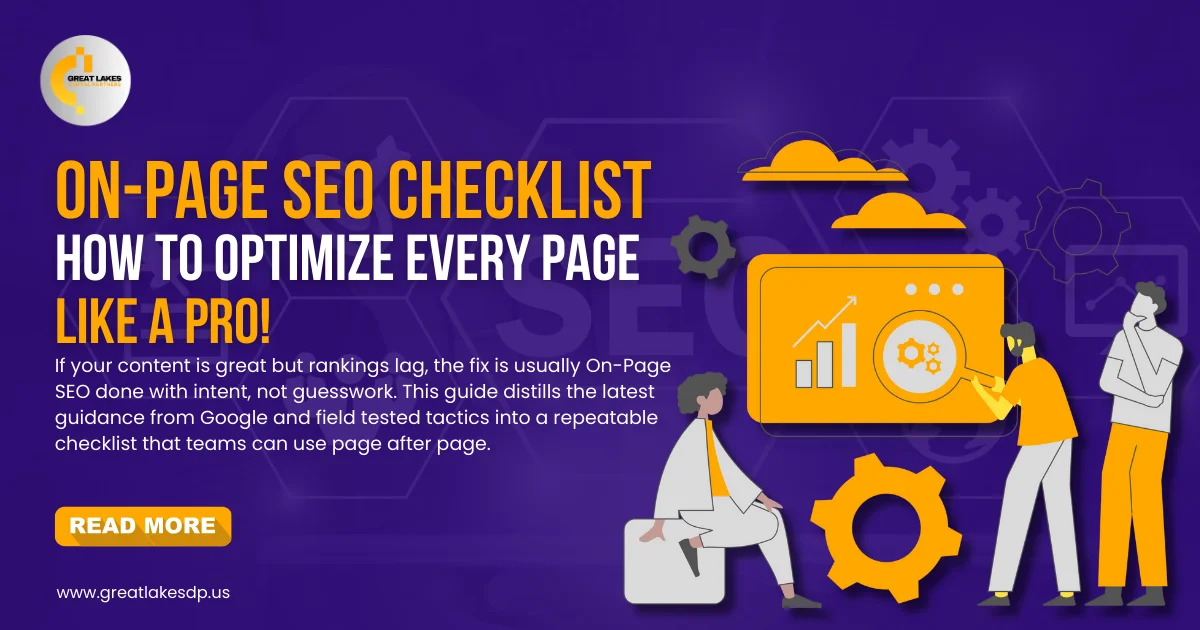Search has changed, yet one constant remains: your page still needs to be the best answer for the query. That is exactly what on-page SEO helps you achieve, by aligning content quality, technical signals, and user experience with what people expect. Google’s move to AI-generated answers and AI Overviews makes clarity and quality even more important, since strong pages can still be surfaced, cited, or used as context.
Mobile-first indexing is fully complete, so your mobile experience is the primary version Google sees. If your desktop looks great but the mobile experience is slow or thin, rankings will suffer.
Table of Contents
ToggleThe 10-Point Ultimate On-Page SEO Checklist for Higher Rankings

Use this on page SEO checklist as your step-by-step playbook. It keeps your process consistent and prevents easy-to-miss gaps that quietly hold back visibility.
1. Craft SEO-Smart Title Tags And Meta Descriptions
Write unique titles that promise a clear benefit, keep titles under roughly 60 characters and descriptions around 155 to encourage higher click-through. Include your primary topic early and match the searcher’s intent. This is a simple area where disciplined SEO optimization pays off because it directly influences relevance and click signals.
2. Structure Headings For People First, Search Second
Use a single H1, then a logical flow of H2 and H3 sections that mirror how a reader would learn the topic. Headings help scanners and also reinforce topical relationships that on-page SEO relies on. Clean hierarchy is part of SEO optimization and improves scanability.
3. Publish Content That Proves Expertise
Depth, originality, and up-to-date information show users and algorithms that your page is worth ranking. Google’s recent core updates continue to push more helpful content to the top, so aim for clear explanations, practical steps, and evidence.
4. Optimize URL Slugs For Clarity
Short, lowercase, hyphenated slugs improve comprehension for users and crawlers. Avoid dates unless necessary and keep the slug aligned with the primary topic. This small on-page SEO tweak clarifies topic focus for both people and bots.
5. Add Images With Smart Optimization
Compress images, use descriptive filenames, and write concise alt text that clarifies what the image shows. Better visuals complement on-page SEO by cutting weight and improving accessibility.
6. Build Internal Links That Guide Discovery
Add contextual links to relevant pages using descriptive anchors. This helps search engines understand relationships and passes authority to key URLs. Internal links also keep readers exploring, which is a healthy signal in any focused checklist.
7. Design For Mobile First, Polish UX Details
Prioritize tap targets, legible fonts, and fast loading on mobile. Since Google primarily uses the mobile version for ranking and indexing, parity between desktop and mobile is essential.
8. Improve Speed And Core Web Vitals
Focus on Largest Contentful Paint, Cumulative Layout Shift, and the new responsiveness metric Interaction to Next Paint, which replaced First Input Delay in 2024. Audit with PageSpeed Insights and fix slow scripts, oversized images, and render-blocking resources.
Prioritize SEO optimization for performance by reducing unused JavaScript and compressing assets.
9. Add Structured Data To Qualify For Rich Results
Use JSON-LD to mark up articles, products, FAQs, and more. Structured data helps Google understand your content and can lead to rich results that increase visibility.
10. Track Performance And Iterate
Monitor impressions, clicks, and average position in Search Console, then refine content, links, and UX. Treat this checklist as a living process that matures with your site. Treat measurement as ongoing SEO optimization that feeds your roadmap.
Measurement Playbook that Teams Can Run Every Month
Review Search Console queries that trigger impressions but few clicks, identify intent gaps and rewrite intros or add missing sections that answer those queries.
Compare pages with high impressions and low average position, and consider targeted internal links from related articles to boost authority.
Log every change in a simple spreadsheet, date, URL, tweak, expected outcome, and check back in 28 days to see the impact. This creates a feedback loop and prevents random one off edits.
Pair analytics with user feedback, add a small survey or watch a few session recordings to spot friction that numbers hide.
Common On-Page SEO Mistakes To Avoid in 2025

- Thin Pages: Don’t chase too many keywords on a single page — it weakens SEO focus.
- Keyword Stuffing: Overloading text with keywords hurts readability and rankings.
- Mobile Parity Neglect: Ensure mobile delivers the same quality experience as desktop.
- Poor Page Experience: Bad navigation, cluttered layouts, or slow interactions reduce engagement.
- Ignoring Core Web Vitals: Optimize for LCP, FID, and CLS to keep speed, responsiveness, and stability strong.
- Missing Local Signals: Always show location, contact info, and service areas clearly for local SEO.
- Skipping Professional Setup: Hire SEO services (e.g., in Michigan) to have these basics in place first.
Complete On-Page SEO Checklist for Higher Google Visibility
Use this step-by-step checklist to optimize your pages for maximum visibility.
- Optimize Title Tags & Meta Descriptions
- Use a Clear Heading Structure
- Publish High-Quality Content
- Create SEO-Friendly URLs
- Optimize Images
- Add Internal Links
- Ensure Mobile Optimization
- Boost Page Speed & Core Web Vitals
- Implement Structured Data
- Audit & Track Performance Regularly
Why Michigan Businesses Benefit From a Local Partner
Search is now shaped by AI Overviews, conversational experiences, and quality-focused core updates. Brands that align content and UX with these shifts will keep earning visibility and clicks. A Great Lakes DP offering SEO services in Michigan can bring local insight, competitive analysis, and fast implementation across content, design, and engineering, which translates to consistent gains.
Take The Next Step In On-Page SEO Success with Great Lakes DP

- Strategy, content, design, and tech combined for real SEO wins.
- Quick audits and tailored roadmaps to target your goals.
- Content rewrites, Core Web Vitals fixes, and more.
- Local edge with trusted SEO services in Michigan.
- Tell us which pages you want to win, and we’ll make them perform.
Frequently Asked Questions About On-Page SEO
1. How long does it take for on page changes to show results?
Small improvements can appear within days for crawled pages, broader gains typically take a few weeks as Google recrawls and re-evaluates more URLs. Timelines vary by crawl frequency, competition, and how strong your changes are.
2. What is the best word count for a page?
There is no universal number; the right length is whatever it takes to cover the topic thoroughly without filler. Aim for completeness, clarity, and usefulness. A compact, precise page can beat a longer but vague article.
3. Do images really influence rankings?
Yes, images affect load time and accessibility, which influence user signals. Compressed formats, descriptive alt text, and responsive sizing improve UX and help search engines understand context.
4. How often should I refresh content?
Review key pages quarterly, update stats, add new insights, and prune anything that is outdated. Regular refreshes signal ongoing relevance and keep your on page SEO checklist aligned with real user questions.
5. Which tools should I use to manage tasks?
Start with Google Search Console for diagnostics and performance, add PageSpeed Insights or Lighthouse for speed checks, a crawler like Screaming Frog for audits, and your preferred rank tracking and analytics stack for trend monitoring.
6. Is link building part of this checklist?
Link building is technically off page, however, your internal linking strategy lives here. Build relevant internal paths from high traffic pages to strategic URLs and make anchors descriptive; this helps distribute authority and clarify topical clusters.
7. How should small businesses approach local search?
Create strong location pages, keep NAP data consistent, and publish content that reflects local intent. If you need hands-on support and faster execution, engaging SEO services in Michigan can speed up testing and implementation for regional brands.


